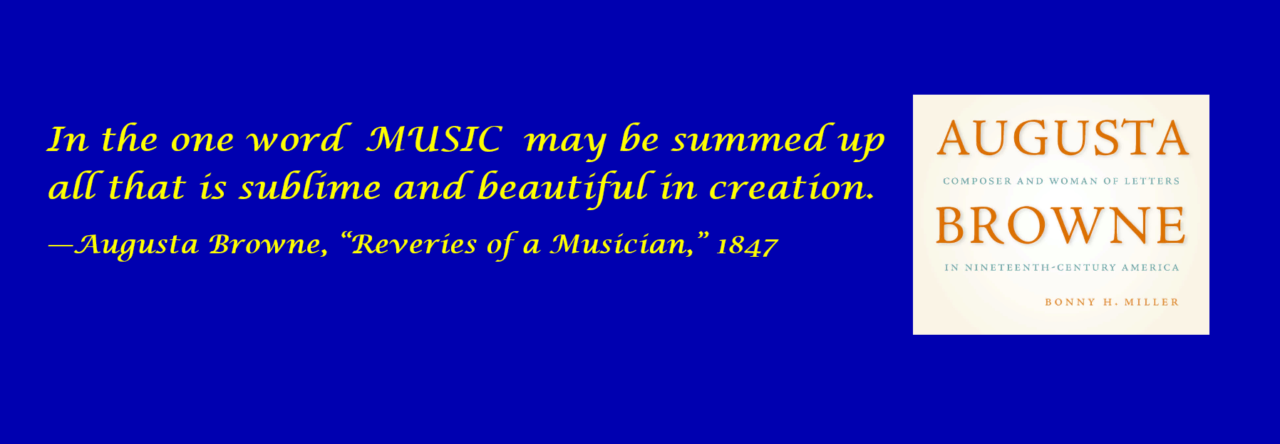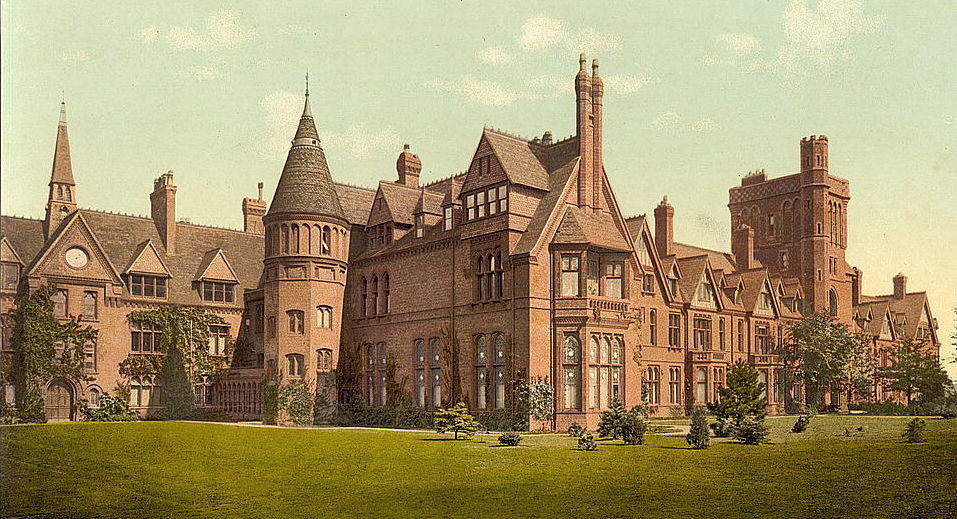The American composer Augusta Browne was not Lady Augusta Browne (1838–1909), ninth child and sixth daughter of Howe Peter [Browne], 2nd Marquess of Sligo (1788–1845). A photograph of Lady Augusta Browne is frequently displayed and misidentified as an image of the composer. The two unrelated women were born in Ireland almost twenty years apart. Lady Augusta Browne sat for portraits and photographs because she was a member of the minor British peerage in Ireland. Her carte-de-visite from the 1860s belongs to the National Portrait Gallery in London. Lady Augusta Browne never married and led a quiet life in Westport, County Mayo.

Lady Augusta Browne
by Numa Blanc & Cie
albumen carte-de-visite, 1860s
NPG Ax46406
The image of Lady Augusta Browne in the Victorian-era photo does not depict the American composer.


